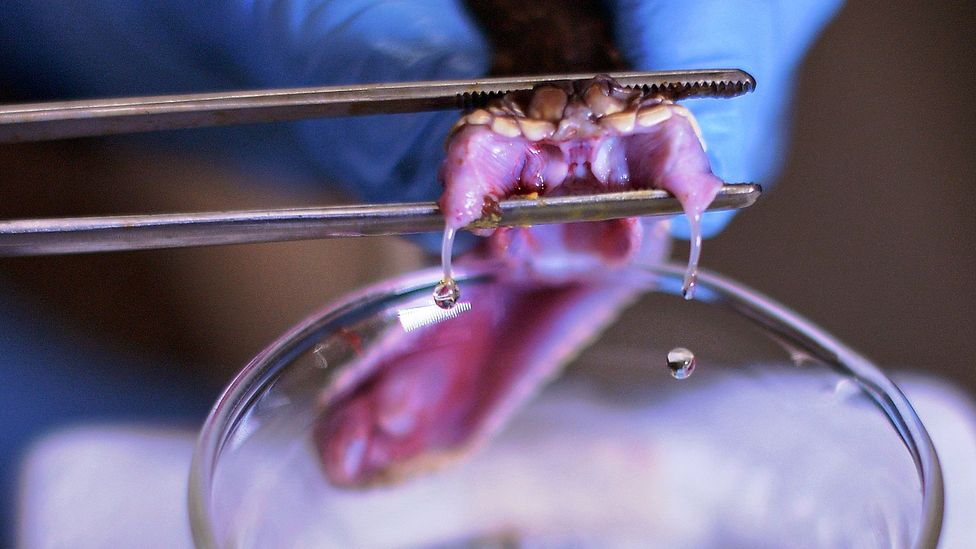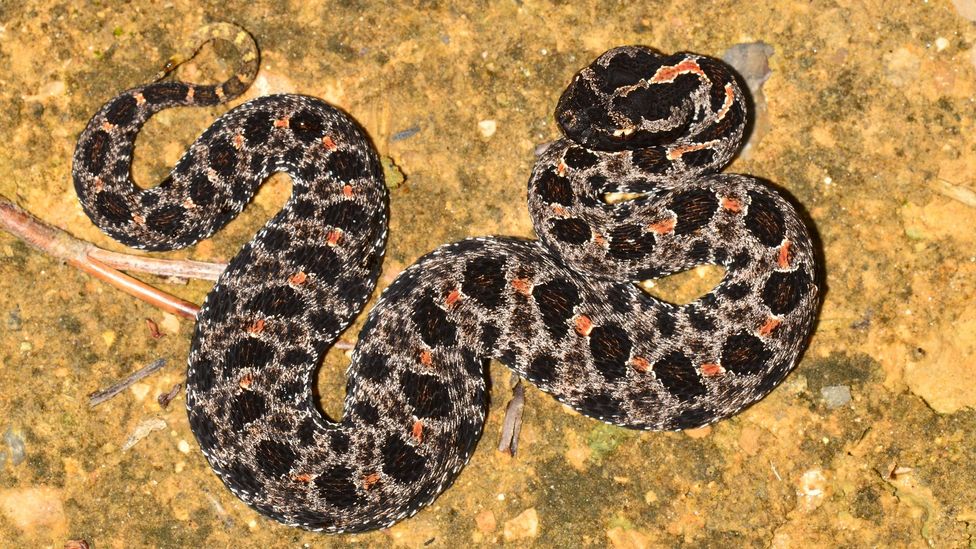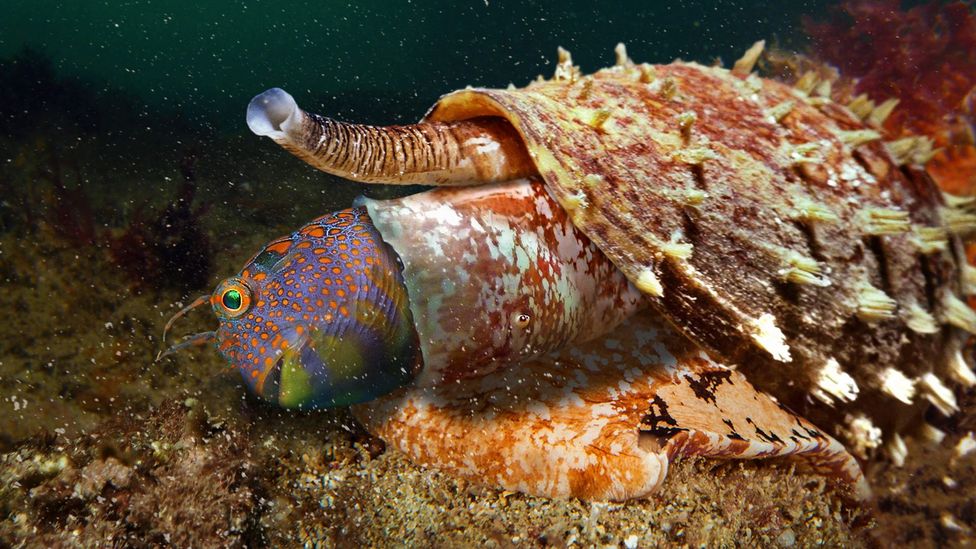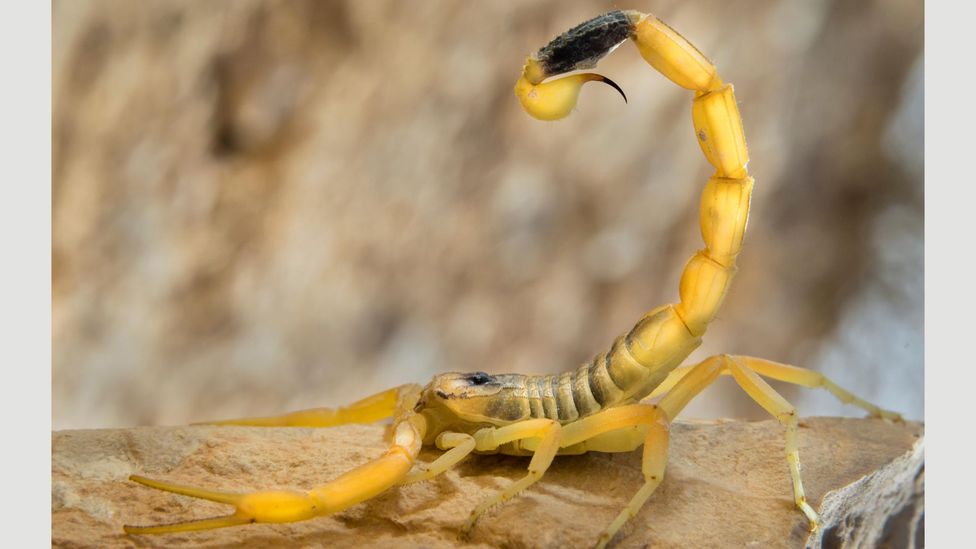Which Of The Following Are Drugs Derived From Animal Substances?
The life-saving medicines inspired by animals
(Image credit:
Getty Images
)

The latest technology allows united states to await for potential medicines in the natural world without collecting or harming a unmarried animal – all you need is their Deoxyribonucleic acid.
T
These days, many of united states of america are more likely to think of wild animals with a source of man illness rather than cure.
Only like plants, which have been function of our medicine cabinets ever since the Neanderthals used poplar tree bark as a painkiller, animals have long been exploited for their medicinal properties.
For instance, Traditional Chinese Medicine (TCM) uses ingredients from 36 animal species including rhinos, blackness bears, tigers and seahorses – many of which are endangered. Ayurvedic medicine recommends snake venom to treat arthritis, while tarantula bites and footing-upwards fangs traditionally been used in S America, Asia and Africa to cure a variety of ailments, from cancerous tumours to toothaches and asthma.

Ayurvedic medicine, which is thousands of years erstwhile, is but 1 form of medicine that recommends animal-derived treatments (Credit: Getty Images)
The vast majority of these traditional remedies are not backed upwardly by whatsoever scientific evidence – and the pursuit of animal parts has already contributed to several extinctions, including the western black rhino and northern white rhino. Upwards until recently pangolins, of which some species are critically endangered, were oftentimes raised at wild fauna farms in China for their scales in TCM, and are idea to have been the source of Covid-19. In fact, top scientists warned this week that our exploitation of wild fauna is likely to lead to more than frequent and deadly pandemics in the future.
Just there might be a style to use wild animals responsibly, and that'southward by studying their chemical ingredients at a molecular level. Thank you to modern technologies, no animal ingredients are required at whatever stage – just a Deoxyribonucleic acid sequence.
Unlike plants, from which people have been isolating specific compounds and turning them into medication for more than 100 years, in animals, specific molecules with medical potential have historically been too difficult to locate or extract. Only that's changing – meaning that while more time to come diseases are likely to come from animals, some of the most exciting drugs of the future will come from them, too.
Yous might also like:
- The vaccine that could transform medicine
- The mystery illness haunting Tanzania
- The shocking new cure for extreme pain
"Nosotros have looked at plants for a long fourth dimension, but we have only just scratched the surface with animals," says Christine Beeton, an immunologist with the Baylor Higher of Medicine. She studies how peptides derived from venoms can be used to treat autoimmune diseases such as multiple sclerosis, rheumatoid arthritis, and myotonic dystrophy.
Thanks to development, we can find large molecules called peptides, which are siblings of molecules that be in the man body, in other animals. This means that peptides from animals ranging from snails and spiders, to salamanders and snakes, tin strop in on our ain cellular components like a divining rod, with very precise effects.

An expert extracts venom from a rattlesnake in Sao Paulo, Brazil (Credit: Getty Images)
Peptides are composed of the same building blocks as proteins, but in much smaller chains – one tin remember of them as "mini proteins". Because they are x to 40 times larger, all the same, than pocket-sized molecule drugs such as aspirin, peptides are much more specific in what they target. As a result, they are far less likely to have side effects.
Today, the mod tools of genomics, proteomics and transcriptomics – the branches of biology that catalogue the chemic structure of DNA, proteins, and their messenger molecules – accept revolutionised how scientists tin can discover compounds in animals that take the potential to get drugs.
"Now we can screen hundreds of compounds in a month. Fifteen years ago that wouldn't accept been possible. You would have had to look at them one past one, and information technology would have taken x years," Beeton says.
Instead of having to laboriously milk snakes and scorpions for their venoms in order to analyse them, researchers can only mine databases of codes to observe peptides with specific properties.
Numerous drugs are already available on pharmaceutical shelves: Enexatide, derived from the saliva of the Gila monster, prescribed for type two diabetes; Ziconitide, extracted from cone snail venom, for chronic pain; Eptifibatide, a constructed modelled on the venom of the southern pygmy rattlesnake, administered to forbid center attacks; Batroxobin, extracted from Due south American pit vipers and used in several dissimilar claret treatments, including the appropriately named "Reptilase"; and Captopril, the first pharmaceutical derived from an animal, an anti-hypertensive approved past the US'southward Food and Drug Administration (FDA) in 1981.

The venom from a species of pygmy rattlesnake inspired Eptifibatide, a synthetic which prevents centre attacks (Credit: Getty Images)
Virtually all of these animal-derived pharmaceuticals are sourced from venoms – some of the nigh complex chemical mixtures found on earth. Though we may retrieve of venoms as rarefied poisons that just a few species possess, 220,000 known animal species produce these chemical cocktails – fully 15% of all animate being species.
These intricate poisons, many of which have evolved over hundreds of millions of years, have exquisite potency, stability, speed, and above all, precision to specific molecular targets.
Brain healing
One of the most promising areas of venom-derived medicines is in preventing permanent brain damage from stroke. Though it is the second leading cause of death worldwide, killing half-dozen million a year and leaving a further five million with permanent disabilities, we have no treatments that tin can heal or prevent encephalon damage post-obit this loss of claret flow to the brain.
The only drug approved by the FDA for this need is tissue plasminogen activator (tPA), which may exist given to break up blood clots in the cognitive avenue. Just we still have no treatments that can prevent the neuronal damage due to oxygen starvation.
"This is the biggest issue we have: millions of people are left to the whims of what that stroke tin do to their brain in the hours or days following information technology," says Glenn King, a biochemist at Australia'due south University of Queensland. King specialises in nervous arrangement disorders in which the underlying cause is a defect in nerve cells' ion channels – tiny tunnels through membranes that let charged ions, like sodium, period in and out of cells, triggering nerve firings. These defects tin can be acquired either through structural anomalies, or an aberrant number of channels.

The bite of a funnel-spider web spider can kill a human, merely one component of its venom could prevent brain damage in stroke survivors (Credit: Getty Images)
As information technology happens, venoms largely target ion channels. King works with the world's largest physical drove of venom samples milked from living invertebrates, with peptides extracted from more than than 700 species including scorpions, spiders, assassin bugs and centipedes. Toxins from insects would have evolved over far longer fourth dimension spans compared to vertebrates – in some cases 400 million years or more – then they are "exquisitely targeted", says King.
When Rex searched his invertebrate venom library, he plant just one molecule that seemed a promising candidate for the treatment of stroke. This was Hi1a, a component of venom from the Australian funnel-web spider Hadronyche infensa – a mixture of iii,000 molecules which Professor Rex describes as "the well-nigh circuitous chemical armory in the world".
In his 2017 paper in the Proceedings of the National Academy of Sciences, King describes the "neuroprotective" attributes of Hi1a in rats induced to have a stroke. If given eight hours later on a stroke, Hi1a could prevent a "huge amount of the damage", he says. And if administered inside four hours, 90% of the damage could be prevented, even at extremely tiny doses. Side furnishings with these toxins would be minimal to non-real, King says: "A 'toxin' isn't necessarily toxic to us – in that location are more than 100,000 species of spiders, yet merely a handful of them are dangerous to humans."
For example, the analgesic drug Ziconitide, derived from cone snail venom, is lethal to fish. But it simply functions as a painkiller when given to humans.

Cone snails produce venom that is lethal to fish – but the drug derived from their venom, Ziconitide, acts as a painkiller in humans (Credit: Getty Images)
Working with ion channels is likewise showing not bad promise in alleviating another common neurological illness: epilepsy. Rex'southward work with the peptide Hm1a, derived from spider venom, shows hope for the treatment of the severe epileptic condition known every bit Dravet syndrome. This course of epilepsy, which begins to have hold in the first year of life, has a rate of sudden unexpected decease that is 30 times higher than in other forms of epilepsy.
Information technology also is profoundly difficult to treat: unremarkably prescribed drugs such as Carbamezapine can actually worsen the status. In a 2018 paper, King reports that mice engineered to take the same genetic deficit every bit people with Dravet Syndrome had their normal neural functioning restored with a dose of spider venom-derived Hm1a – and their mortality significantly reduced.
Cancer hopes
Currently in clinical trials in the US and likely to exist approved by the FDA within two years is Tozuleristide (BLZ-100), a kind of "tumour paint" derived from scorpion venom. Initially developed at the Fred Hutchinson Cancer Research Center in Seattle and described in the journal Cancer Research in 2007, this drug selectively binds to brain tumour cells, simply not healthy ones. This allows brain surgeons to more easily see cancerous tissue during surgery.
"Every week in clinic I ask myself: what am I doing today that I don't desire to exist doing in xv years?" says oncologist Jim Olson of Fred Hutchinson. In 2004, he witnessed a teenaged girl undergo a fourteen-hour surgical procedure to remove a encephalon tumour in which surgeons accidentally left behind a thumb-sized piece of cancer, mistaking information technology for healthy tissue.
Adamant to never permit something like that happen again, Olson tasked his researchers with finding a molecule that would permit surgeons to see cancer with the naked eye.
It only took six weeks of scouring the DNA databases to find a suitable candidate: Chlorotoxin Cy5.5, derived from the venom of the ferociously named "deathstalker" scorpion Leiurus quinquestriatus, which other researchers in Alabama in 1998 had discovered could adhere to ion channels on the surface of brain tumour cells.

The venom of a deathstalker scorpion helps researchers find, and remove, cancer tumours as well small for even MRI scans to spot (Credit: Getty Images)
The toxin allows researchers to see clumps of cancer just 200 cells large – making it 500 times more sensitive than MRI scans. Other teams are working on ways to use Tozuleristide to label other forms of cancer, including breast and spine cancer.
Meanwhile, some researchers are looking at animal-derived compounds that tin can kill cancer, non just tag it.
Using the ArachnoServer Database, Maria Ikonomopoulou, a research officeholder at the QIMR Berghofer Medical Research Institute in Australia, discovered that the peptide gomesin, derived from the venom of the Brazilian tarantula Acanthoscurria gomesiana, can impale skin cancer cells. Inspired past this, she too found that the venom of the Australian funnel-spider web spider H. infensa (the same species used past King in stroke repair) tin can impale cancerous pare cells but not healthy ones.
A spider may just produce 10ml of venom in a day, a scorpion just 2ml – and a pseudoscorpion (tiny arachnids which have scorpion-like claws) peradventure less than five nanolitres (a millionth of a millilitre) a twenty-four hours. Simply with the data from new databases, researchers tin chemically synthesise molecules with specific properties in sufficient amounts.
Peptides for pain
Fauna peptides are as well showing enormous hope in treating a condition that fully one in 5 of the states will develop at some bespeak, according to the Centers for Disease Control and Prevention: chronic hurting. This affliction is unduly common considering it is associated with a huge variety of conditions, from cancer to diabetic neuropathy and pure physical injury.
Venoms are a goldmine for potential treatments, because these poisons have been honed over millions of years of development to target the nervous organisation in order to immobilise other animals.
"Nature has done all the hard chemical science for u.s.a. – nosotros just have to attempt and sympathise it a bit better," says Irina Vetter, an associate professor at the Constitute for Molecular Bioscience Eye for Hurting Enquiry. Peptides from venom can take surprising, unusual, and extremely useful properties, she says: the painkiller Ziconitide, for example, shows no testify of leading to withdrawal symptoms – a huge advantage over today's opiates.
Animal peptides are as well showing potential in the treatment of the eighty known autoimmune diseases, which describe conditions in which the body turns on itself, such as multiple sclerosis, psoriasis rheumatoid arthritis, lupus and diabetes.
"There are literally thousands of peptides to choose from – in the former days we would have to grind up some poor organism, isolate a few peptides from them and test them confronting various targets, simply now we don't have to do that anymore. We take all the peptide sequences in our databases," says Ray Norton of Australia's Monash University. "Now the challenge is knowing what to piece of work on."

Millions of years of development mean venoms are exquisitely targeted to other animals' nervous systems (Credit: Getty Images)
Mande Holford, an associate professor in chemistry at Hunter College in New York City who studies how venoms tin be used to discover drugs for pain and cancer, says information technology goes deeper than simply finding new drugs: venoms likewise offering the opportunity to answer big questions near evolution.
"This is a chance to achieve non but Moon shots, simply Jupiter shots: how tin we figure out how venom evolved and use this for the benefit of humanity?" she asks.
Scientists are now diving into the biological wealth of fauna peptides to tackle a new threat: the novel coronavirus. Zachary Crook, lead protein scientist in the Jim Olson Lab at the Fred Hutchinson Cancer Research Center, has started looking through databases of peptides from a range of animals in a search for peptides that could either demark to the "fasten poly peptide" on the surface of the virus, or to the ACE-2 receptor on human cells which the virus attaches to, in social club to forestall it from exerting its effects. "Our eventual goal is a drug administered by a puff from an inhaler or nebuliser which can halt the infection in its tracks," says Cheat.
Despite the many applications of animal peptides, however, time to observe new solutions may be running out. Thank you to the biodiversity crisis, every yr thousands of species become extinct, oftentimes before nosotros've even discovered them or had the chance to sequence their genome.
"The scientific evidence is pretty solid that we will hitting an inflection point where information technology will be difficult to recover this trend, and we will lose a lot of species – the next ten years are important for us to bin that curve and effort to restore, protect, and learn from the biodiversity we have on this planet," says Holford.
Now, as always, nature tin provide united states of america both with cures equally well as scourges – and in that location are possibly few examples of this more stiff than animal toxins.
Join one million Time to come fans by liking u.s. on Facebook , or follow us on Twitter or Instagram .
If you liked this story, sign upwardly for the weekly bbc.com features newsletter , called "The Essential List". A handpicked selection of stories from BBC Futurity , Civilisation , Worklife , and Travel , delivered to your inbox every Friday.
Source: https://www.bbc.com/future/article/20200507-medicines-and-drugs-from-animals-venom
Posted by: mclachlanlaze1999.blogspot.com

0 Response to "Which Of The Following Are Drugs Derived From Animal Substances?"
Post a Comment